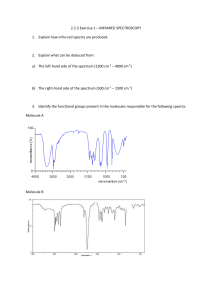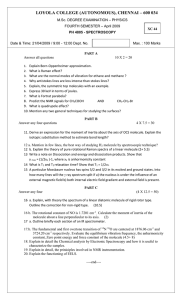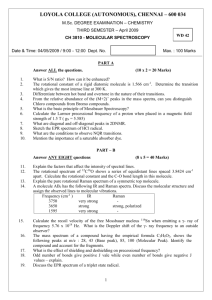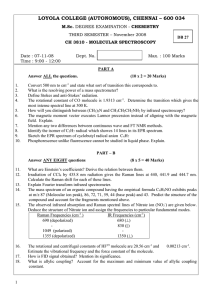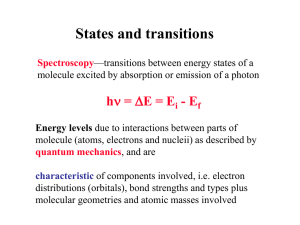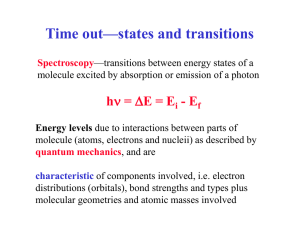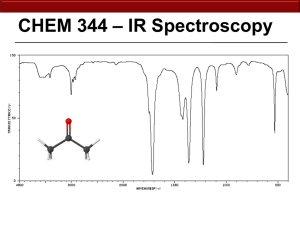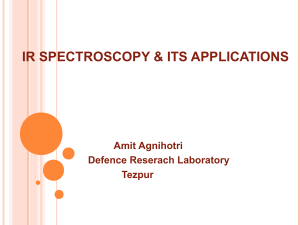LOYOLA COLLEGE (AUTONOMOUS), CHENNAI – 34. First semester – NOVEMBER 2004
advertisement
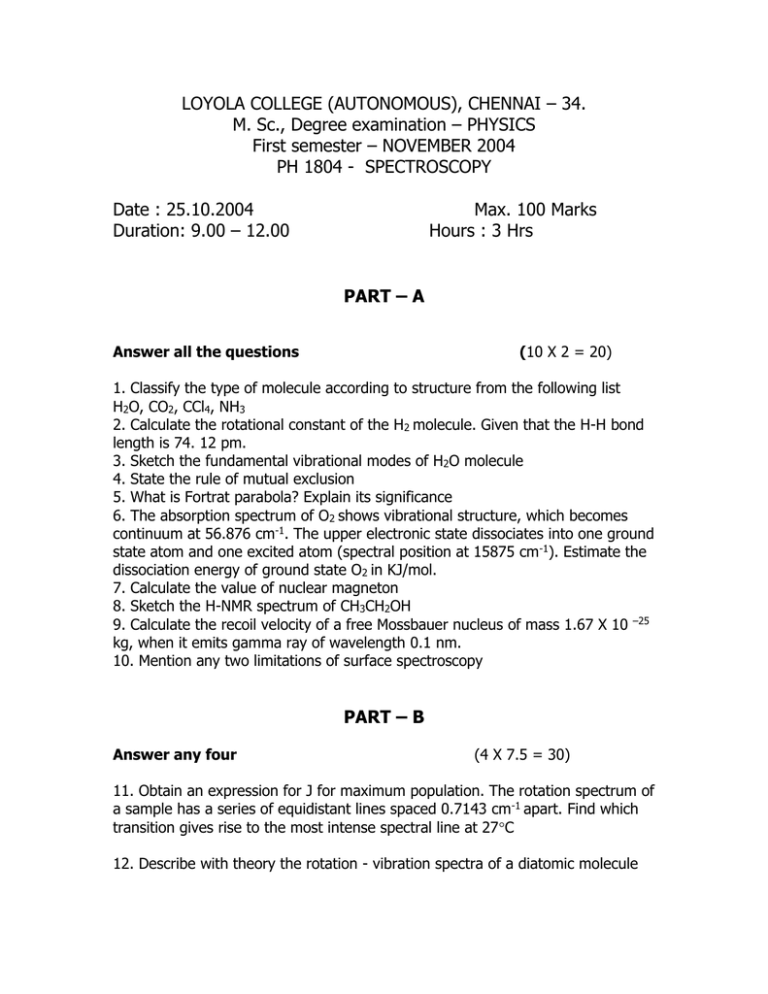
LOYOLA COLLEGE (AUTONOMOUS), CHENNAI – 34. M. Sc., Degree examination – PHYSICS First semester – NOVEMBER 2004 PH 1804 - SPECTROSCOPY Date : 25.10.2004 Duration: 9.00 – 12.00 Max. 100 Marks Hours : 3 Hrs PART – A Answer all the questions (10 X 2 = 20) 1. Classify the type of molecule according to structure from the following list H2O, CO2, CCl4, NH3 2. Calculate the rotational constant of the H2 molecule. Given that the H-H bond length is 74. 12 pm. 3. Sketch the fundamental vibrational modes of H2O molecule 4. State the rule of mutual exclusion 5. What is Fortrat parabola? Explain its significance 6. The absorption spectrum of O2 shows vibrational structure, which becomes continuum at 56.876 cm-1. The upper electronic state dissociates into one ground state atom and one excited atom (spectral position at 15875 cm-1). Estimate the dissociation energy of ground state O2 in KJ/mol. 7. Calculate the value of nuclear magneton 8. Sketch the H-NMR spectrum of CH3CH2OH 9. Calculate the recoil velocity of a free Mossbauer nucleus of mass 1.67 X 10 –25 kg, when it emits gamma ray of wavelength 0.1 nm. 10. Mention any two limitations of surface spectroscopy PART – B Answer any four (4 X 7.5 = 30) 11. Obtain an expression for J for maximum population. The rotation spectrum of a sample has a series of equidistant lines spaced 0.7143 cm-1 apart. Find which transition gives rise to the most intense spectral line at 27C 12. Describe with theory the rotation - vibration spectra of a diatomic molecule 13. What is Franck-Condon principle? Using the same, explain the intensity of spectral lines 14. Discuss the effect of electric and magnetic fields on Mossbauer spectrum exhibited by 57 Fe. 15. Outline the principle of Electron Energy Loss Spectroscopy and mention the applications PART – C Answer any four (4 X 12.5 = 50) 16a) Explain, with necessary theory, the rotational spectrum of a diatomic molecule of the rigid-rotor type. Deduce the spectrum of non-rigid rotor type molecule. (10) b) The bond-length of nitrogen molecule is 0.10976 nm. Calculate the seperation between Raman lines. (2.5) 17. a) Outline the theory of Raman effect on the basis of i) classical theory ii) quantum theory. (8) b) The fundamental band of CO is centered at 2143 cm-1 and the first overtone band at 4259.7 cm-1. Calculate i) fundamental frequency of vibration ii) anharmonicity constant iii) zero point energy (4.5) 18. Discuss in detail, the method of characterizing samples using Electron spectroscopy for chemical analysis 19. Discuss in detail, the shielding and de-shielding phenomenon in nuclear magnetic resonance spectroscopy. Explain how the spectral splitting is explained using family tree method. 20. Explain the principles of Auger electron spectroscopy. * * * * * * *

